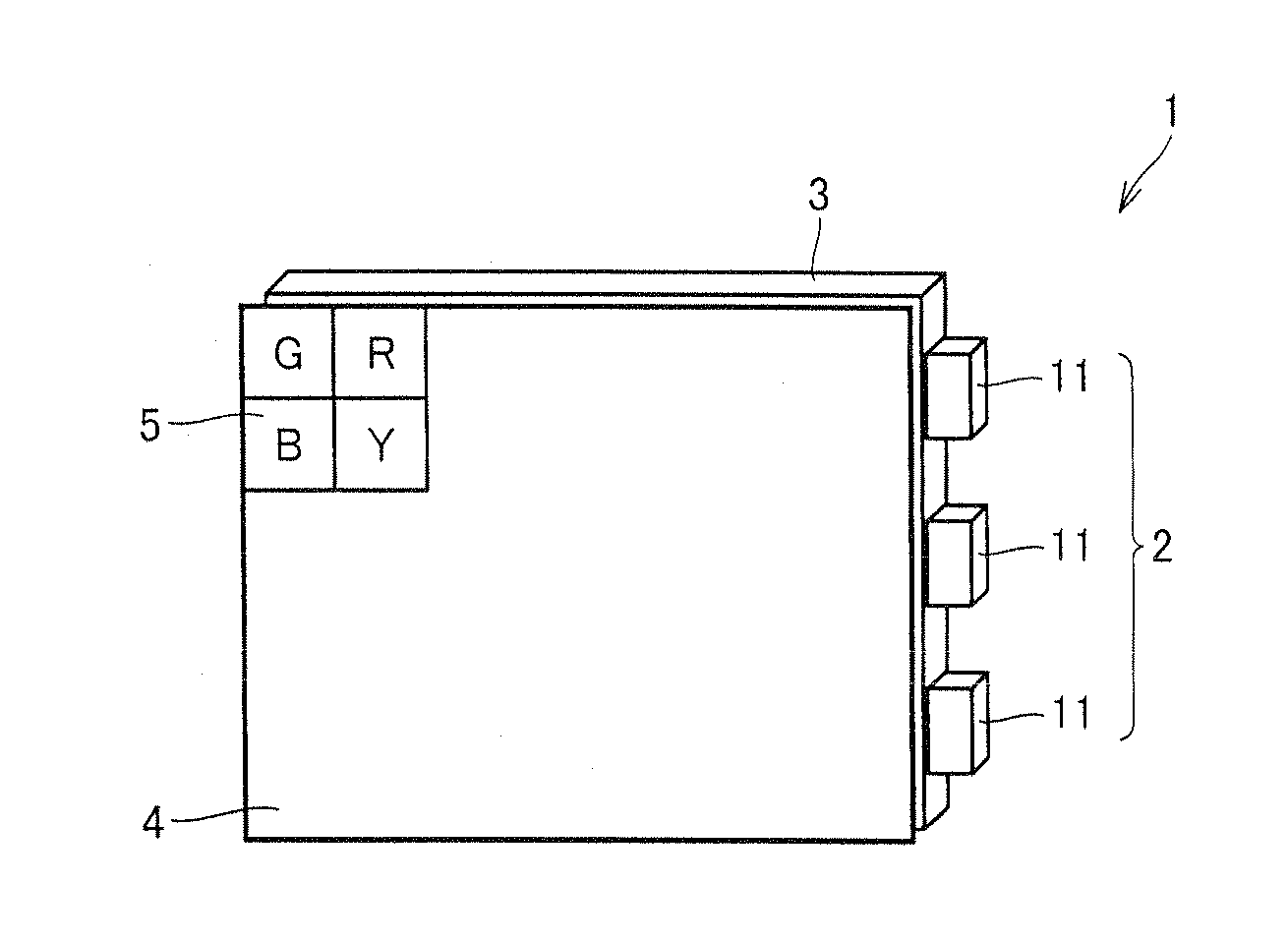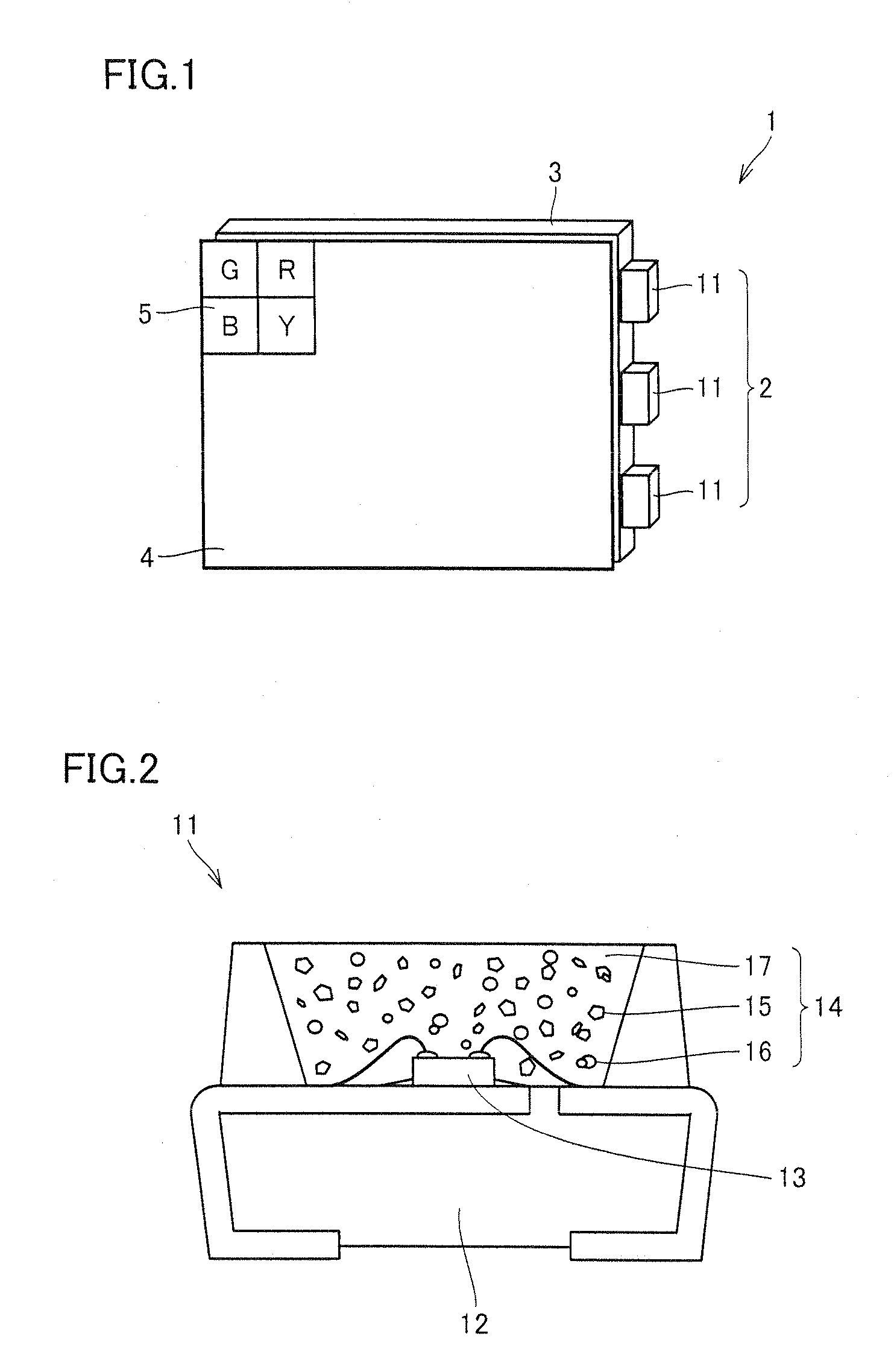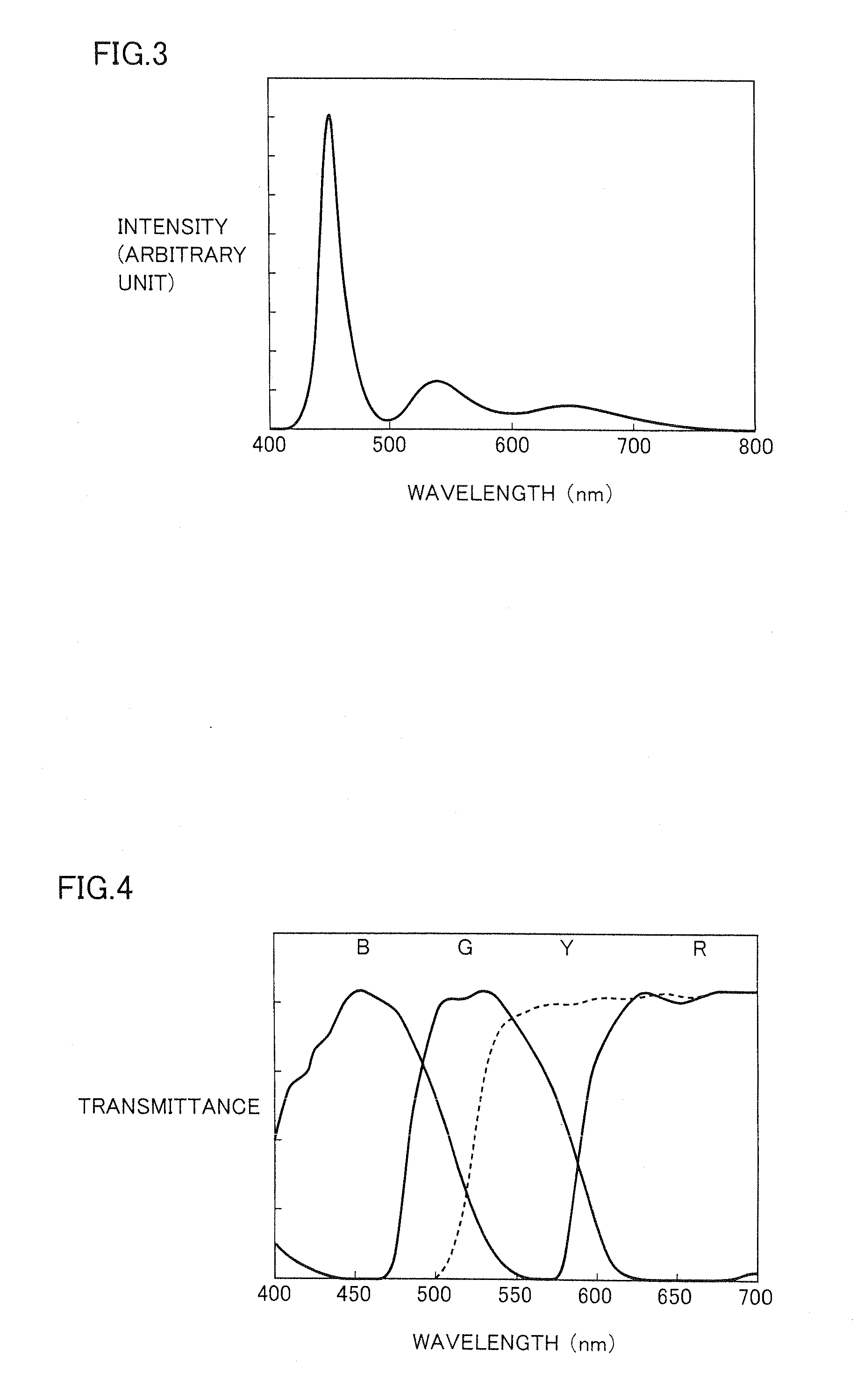Liquid crystal display
a liquid crystal display and liquid crystal technology, applied in the field of liquid crystal display, can solve the problems of not being able to set input energy to high level, phosphor similarly decreases, and temperature rise in the wavelength conversion portion of light-emitting elements and operation is currently unavoidable, and achieves brighter displayed image and high color reproducibility. ratio
- Summary
- Abstract
- Description
- Claims
- Application Information
AI Technical Summary
Benefits of technology
Problems solved by technology
Method used
Image
Examples
example 1
[0103]First, light-emitting device 11 having a structure similar to that shown in FIG. 2 including the light-emitting element mounted on the package and the wavelength conversion portion containing the green phosphor and the red phosphor dispersed in the medium was fabricated. In light-emitting device 11, a gallium nitride (GaN)-based semiconductor having a peak wavelength at 450 nm of blue was used as the light-emitting element, a Eu-activated SiAlON phosphor having a peak wavelength around 540 nm (Eu concentration in crystal: 0.6% by mass, Al concentration in crystal: 2% by mass, oxygen concentration in crystal: 1.1% by mass) was used as the green phosphor, and (Ca0.99Eu0.01)AlSiN3 was used as the red phosphor. A mixture of the green phosphor and the red phosphor in a ratio of 1:0.25 was dispersed into silicone resin which is the medium, to fabricate the wavelength conversion portion. FIG. 3 is a graph showing an emission spectrum of light-emitting device 11 thus obtained, with th...
example 2
[0107]Light-emitting device 11 was fabricated as in Example 1, except for using a Eu-activated β-type SiMON phosphor having a peak wavelength in a range from 520 to 530 nm (Eu concentration in crystal: 0.5% by mass, Al concentration in crystal: 0.6% by mass, oxygen concentration in crystal: 0.3% by mass) as the green phosphor, using (Ca0.99Eu0.01)AlSiN3 as the red phosphor, and mixing the green phosphor and the red phosphor in a ratio of 1:0.33. FIG. 8 is a graph showing an emission spectrum of the light-emitting device obtained in Example 2, with the axis of ordinate representing intensity (arbitrary unit), and the axis of abscissa representing wavelength (nm). As shown in FIG. 8, the light-emitting device obtained in Example 2 has spectral characteristics adjusted in accordance with transmission characteristics of a liquid crystal display to be described below. The liquid crystal display was fabricated as in Example 1 by using the light-emitting device thus obtained as a backlight...
example 3
[0113]FIG. 11 is a configuration diagram of a liquid crystal television 80 incorporating the light-emitting device similar to that used in Example 1 except that the device is of a top emission type rather than of a side emission type as a backlight light source, and including a liquid crystal display having subpixels of red (R), green (G), blue (B) and yellow (Y), and circuits for driving the liquid crystal display. Here, the light-emitting devices similar to that used in Example 1 except that the devices are of a top emission type rather than of a side emission type were arranged in a matrix on a backside of a liquid crystal display panel, to fabricate a liquid crystal television having a screen size of 46 inches using a liquid crystal display 81 which is a liquid crystal panel of an area active type (local dimming type) for emitting LED light from the backside. In liquid crystal display 81, each pixel 82 includes subpixels of red (R), green (G), blue (B) and yellow (Y).
[0114]Liqui...
PUM
| Property | Measurement | Unit |
|---|---|---|
| emission peak wavelength | aaaaa | aaaaa |
| emission peak wavelength | aaaaa | aaaaa |
| emission peak wavelength | aaaaa | aaaaa |
Abstract
Description
Claims
Application Information
 Login to View More
Login to View More - R&D
- Intellectual Property
- Life Sciences
- Materials
- Tech Scout
- Unparalleled Data Quality
- Higher Quality Content
- 60% Fewer Hallucinations
Browse by: Latest US Patents, China's latest patents, Technical Efficacy Thesaurus, Application Domain, Technology Topic, Popular Technical Reports.
© 2025 PatSnap. All rights reserved.Legal|Privacy policy|Modern Slavery Act Transparency Statement|Sitemap|About US| Contact US: help@patsnap.com



